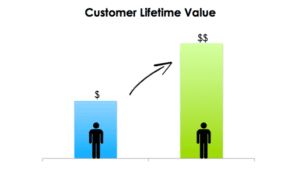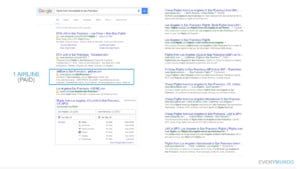Mobile Focus
If there’s one aspect of airlines’ direct customer acquisition efforts where there is opportunity to seize sizable market share, it is mobile customer bookings through the direct channel. Mobile conversion rates on carriers’ branded websites and apps are averaging only one-fifth of their desktop conversion rates.
With smartphone and tablet use estimated to account for 30-50% of traffic to airline websites in 2016, airlines may see their mobile conversion rates – and, increasingly, their overall direct bookings – continue to lag behind third party distributors. To combat the problem, airlines should look to their peers in the travel-booking ecosystem. By improving in the three key areas outlined below, airlines can begin to reduce their reliance online travel agencies (OTAs) and metasearch engines (MSEs) to drive direct bookings and increase customer lifetime value (LTV).
1) User Experience
According to research, 40% of e-commerce purchases in the U.S. and 50% worldwide, now involve multiple devices throughout the consumer buying journey. Today’s multi-device consumers expect a fully-optimized mobile experience on every site they visit on a smartphone or tablet – and if they don’t get one, they navigate elsewhere.
Yet the majority of airlines still haven’t invested in providing customers with a sophisticated mobile experience. OTAs and MSEs, on the other hand, have. With Facebook reporting that 43% of travelers prefer booking with suppliers that provide a great multi-device experience, airlines with underperforming mobile sites will lose more and more direct bookings over time to the third-party suppliers. Furthermore, a reported 72% of travelers are motivated by a smooth booking experience to book with the same supplier – OTA or airline – again.
2) Search & Visibility
Dodging buggy mobile interfaces and avoiding slow load times aren’t the only reasons travelers prefer OTAs, MSEs, and other sites over those of the airlines. Thanks to search engine algorithms that prioritize mobile-friendly pages in their results, many travelers are involuntarily directed towards aggregator sites.
According to research conducted by Google in 2015, 85% of travel plans begin online with 90% of travelers starting their searches with Google and 75% of clicks within search results going to organic – rather than paid – links. To grow their direct bookings, airlines must both enhance their digital marketing strategies and invest in a mobile-friendly website to perform better online and ultimately decrease their bounce rates.
3) Focus On Traveler Lifetime Value

Fileboard.com
Boosting their investment in mobile solutions and deploying more aggressive digital marketing strategies will benefit airlines in other ways, as well. For decades, airlines have marketed to potential customers with the goal of driving individual flight purchases, making “cost per sale” their most relevant metric. OTAs, however, have taken a different approach – spending their marketing dollars to provide a platform which maximizes the LTV of a customer.
Lessons for Airlines
By seizing mobile consumers from the start of the travel booking process through mobile-friendly interfaces, OTAs “own” their relationships with those travelers and essentially lease them out to airlines for their flight-purchase transactions. Investing in mobile-centric strategies to boost customer acquisition will allow airlines to continually build stronger and more valuable relationships with travelers. By providing them with greater value over time through targeted messaging, personalized offers, loyalty marketing, and other efforts airlines can engage customers earlier in the booking funnel and ensure greater LTV.


